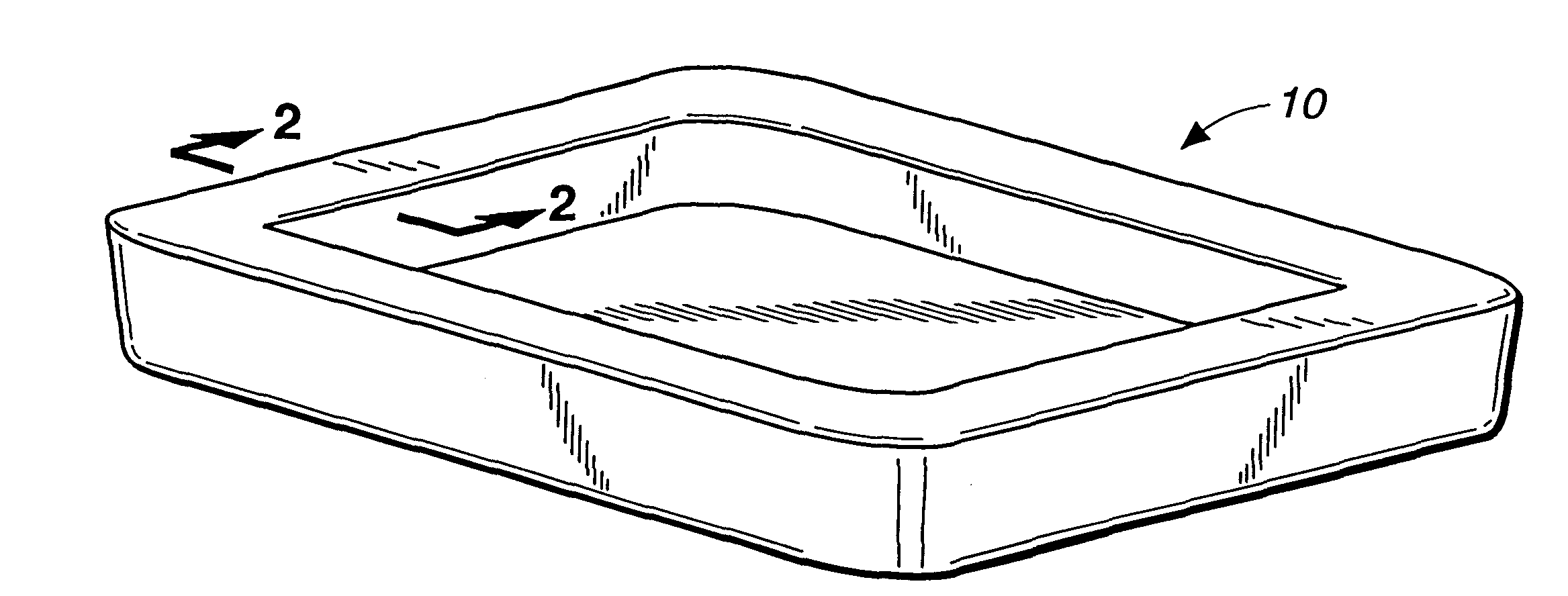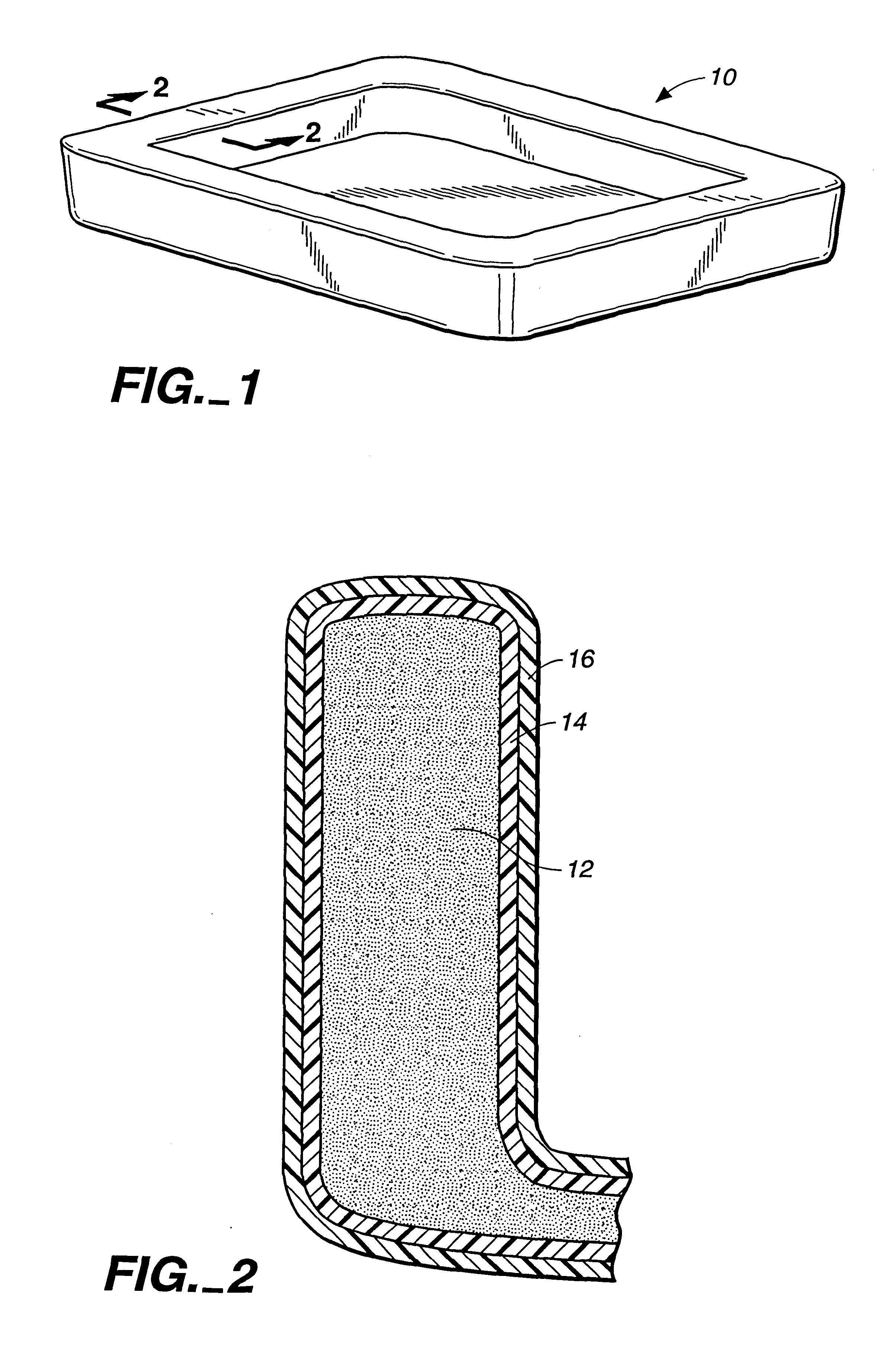Biodegradable polyester and natural polymer laminates
a natural polymer and polyester technology, applied in the field of biodegradable articles, can solve the problems of inability to biodegrade, inapplicability to use, and starch itself not making acceptable films, etc., and achieve the effect of adequate adhesion
- Summary
- Abstract
- Description
- Claims
- Application Information
AI Technical Summary
Benefits of technology
Problems solved by technology
Method used
Image
Examples
example 1
[0049]Solutions of hydroxy-functional polyesters suitable for use as the self-adherent layers and to form moisture resistant coatings in practicing the invention were prepared, three of which are indicated below by the acronyms “HQ-DDCA,”“BIS Adipic,” and “BIS CHD.” These solutions were 10 wt. % of the noted hydroxy-functional polyester in tetrahydrofuran. Two comparative polyesters were similarly dissolved in appropriate solvents. These were poly(lactic acid) and poly-hydroxybutyrate-co-valerate, designated by the acronyms “PLA” and “PHBV,” respectively. Films formed either entirely of starch or by about equal amounts of starch and PVOH, and having a thickness of about 50 μm, were then coated with solutions of the different polyesters by brushing, spraying, and / or dipping. After having applied the synthetic polymers to the substrate surfaces, the solvents were removed by applying a stream of air. The ease of removing the coatings from the films was determined first in a dry conditi...
example 2
[0052]Turning to FIG. 3, data from an inventive embodiment with BIS Adipic coated onto a starch / PVOH blend in a “dog-bone” form is illustrated. Measurements were taken on an Instron testing machine as the dog-bone specimen was subjected to being pulled. The inventive embodiment did not delaminate. The specimen failed (pulled apart) before delamination had occurred. By contrast, a comparative dog-bone specimen was prepared having poly(lactic acid) coated onto the same starch / PVOH blend substrate. When subjected to the same pulling test, the comparative specimen delaminated before a displacement of 600 was achieved (and thus before the starch / PVOH substrate itself have pulled apart).
example 3
[0053]More polyester solutions were prepared, all of which were hydroxy-functional polyesters suitable for use in the invention. Two of these were coated on starch based foam trays (such as are used for serving fast foods). Foam trays made of starch would not normally be suitable for applications-where there is exposure to moisture; however, the hydroxy-functional polyester coatings not only adhered extremely well, but also conveyed substantial water resistance to the so-coated trays. Three more different types of substrates were also coated, which illustrate that different types of natural polymers are suitable substrates in practicing the invention.
[0054]As seen by the summarized results of Table 2, all these inventive embodiments 7-11 had well adhered coatings.
[0055]
TABLE 2Ease of Coating RemovalAfter WaterDrySoakingInventive Coated Foam Trays 7 (HQ-DDCA / Starch Tray)DifficultDifficult 8 (BIS Adipic / Starch Tray)DifficultDifficultInventive Coated Substrates 9 (BHPF-CHD / Bond Paper)C...
PUM
| Property | Measurement | Unit |
|---|---|---|
| density | aaaaa | aaaaa |
| thickness | aaaaa | aaaaa |
| thickness | aaaaa | aaaaa |
Abstract
Description
Claims
Application Information
 Login to View More
Login to View More - R&D
- Intellectual Property
- Life Sciences
- Materials
- Tech Scout
- Unparalleled Data Quality
- Higher Quality Content
- 60% Fewer Hallucinations
Browse by: Latest US Patents, China's latest patents, Technical Efficacy Thesaurus, Application Domain, Technology Topic, Popular Technical Reports.
© 2025 PatSnap. All rights reserved.Legal|Privacy policy|Modern Slavery Act Transparency Statement|Sitemap|About US| Contact US: help@patsnap.com



